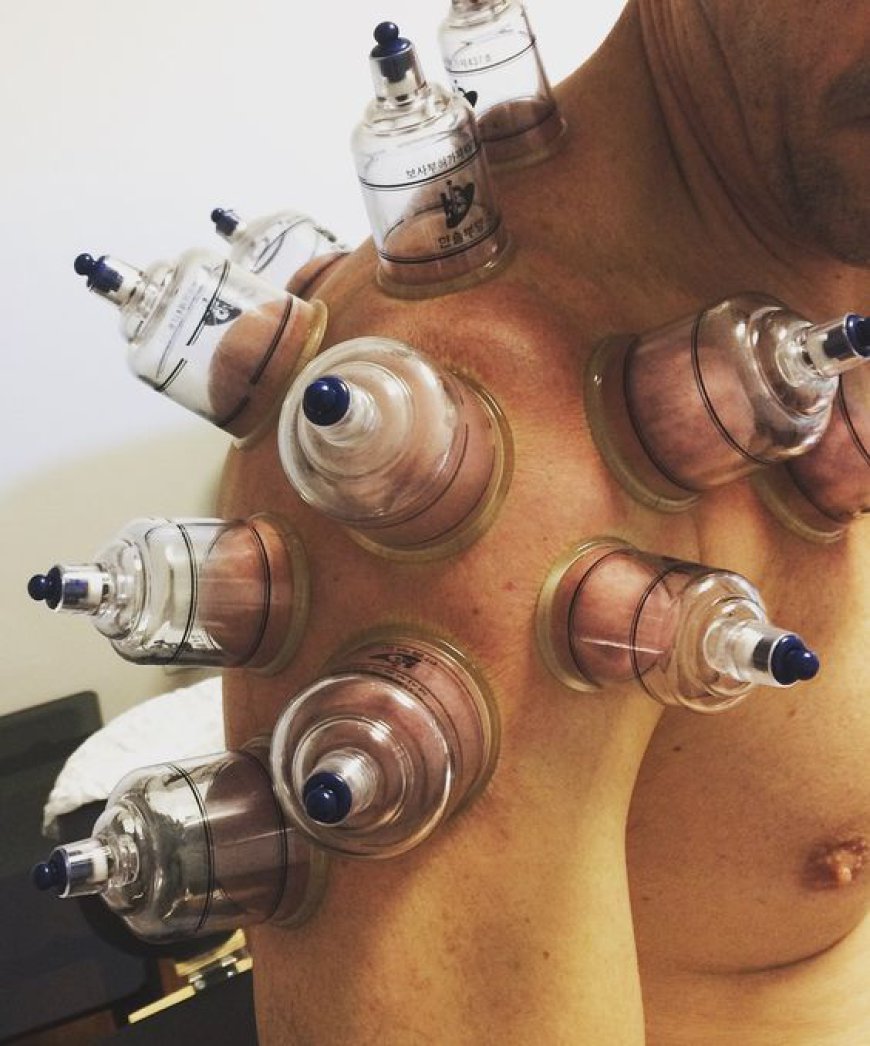Inflammation is a natural response of the body to injury, infection, or harmful stimuli. While it is essential for healing, chronic inflammation can lead to various health problems, including autoimmune disorders, heart disease, and diabetes. Many individuals seek natural remedies to manage inflammation effectively. One such treatment gaining popularity is hijama, also known as wet cupping therapy.
Understanding Hijama
Hijama in Dubai is a traditional therapeutic technique that involves creating a vacuum on the skin using cups. These cups can be made from various materials, including glass, plastic, or bamboo. In wet cupping, small incisions are made on the skin's surface before applying the cups, allowing for the removal of a small amount of blood along with the trapped toxins. This method is believed to help stimulate circulation, improve blood flow, and facilitate the body's natural healing processes.
The Connection Between Hijama and Inflammation
Research suggests that hijama can effectively reduce inflammation in various conditions. By drawing blood to the surface of the skin, hijama promotes increased circulation, which is crucial for delivering oxygen and nutrients to tissues. This improved blood flow can help to flush out toxins and reduce the buildup of inflammatory markers in the body.
-
Enhanced Circulation:
One of the primary mechanisms by which hijama reduces inflammation is through enhanced circulation. The suction created by the cups helps to dilate blood vessels, allowing for improved blood flow to the affected areas. This increased circulation can deliver essential nutrients and oxygen to inflamed tissues, promoting healing and reducing swelling.
-
Release of Toxins:
The process of wet cupping involves the removal of stagnant blood and toxins from the body. When blood is drawn to the surface of the skin, it facilitates the elimination of waste products that can contribute to inflammation. This detoxification process is vital in reducing the overall inflammatory response within the body.
-
Stimulation of the Immune System:
Hijama has been shown to stimulate the immune system, promoting the production of white blood cells and enhancing the body's ability to fight off infections and inflammation. This immune response can help to combat the underlying causes of inflammation, leading to improved health outcomes.
Conditions Benefiting from Hijama
Hijama has been reported to be beneficial for a variety of inflammatory conditions, including:
-
Arthritis:
Many individuals suffering from arthritis experience chronic inflammation that leads to joint pain and stiffness. Hijama therapy can help reduce inflammation in the joints, providing relief from pain and improving mobility.
-
Muscle Inflammation:
Athletes and active individuals often encounter muscle inflammation due to overuse or injury. Hijama can aid in reducing muscle soreness and promoting faster recovery by alleviating inflammation in the affected areas.
-
Respiratory Inflammation:
Conditions such as asthma and bronchitis involve inflammation of the airways. Hijama therapy may help reduce inflammation in the respiratory system, leading to improved breathing and overall lung function.
-
Skin Conditions:
Inflammatory skin conditions like eczema and psoriasis can also benefit from hijama. By promoting circulation and detoxification, hijama can help alleviate symptoms associated with these conditions.
The Science Behind Hijama
While many individuals report positive experiences with hijama, scientific studies are still emerging to support its effectiveness in reducing inflammation. Some research indicates that hijama may reduce levels of inflammatory markers in the body, such as C-reactive protein (CRP) and interleukin-6 (IL-6). These markers are often elevated in individuals with chronic inflammation.
-
Cupping Therapy and Inflammatory Markers:
Studies have shown that hijama can lead to significant reductions in inflammatory markers post-treatment. The improved blood flow and detoxification effects of hijama contribute to these changes, suggesting that it may be a valuable adjunct therapy for individuals with chronic inflammatory conditions.
-
Individual Variability:
It is essential to recognize that responses to hijama can vary among individuals. Factors such as the specific condition being treated, the individual's overall health, and the skill of the practitioner can influence the effectiveness of hijama therapy.
Safety and Considerations
Hijama is generally considered safe when performed by trained practitioners. However, it is essential to consult with a healthcare professional before starting any new treatment, especially if you have underlying health conditions or are on medication.
-
Side Effects:
While hijama is well-tolerated by many, some individuals may experience mild side effects such as bruising, soreness, or temporary skin irritation at the treatment site. These effects usually resolve quickly.
-
Professional Guidance:
Seeking treatment from qualified and experienced practitioners is crucial for ensuring safety and maximizing the benefits of hijama. Practitioners should follow proper hygiene protocols and techniques to minimize the risk of complications.
Conclusion
Hijama therapy offers a promising approach to reducing inflammation and promoting overall health. Its ability to enhance circulation, detoxify the body, and stimulate the immune system makes it a valuable addition to holistic healthcare practices. As more individuals seek natural remedies for inflammation, hijama continues to gain recognition for its therapeutic benefits. However, it is essential to approach hijama with informed awareness, seeking guidance from qualified practitioners to ensure safe and effective treatment. If you are considering hijama as a potential solution for managing inflammation, consult with a healthcare provider to discuss your specific needs and explore how this ancient therapy may support your journey to better health.


 laiba5656
laiba5656